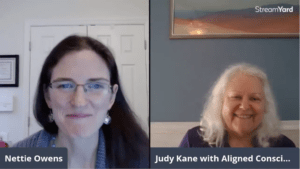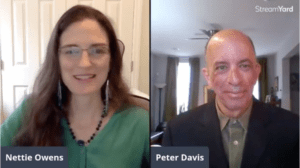Using your psychology expertise, what do businesses need to know right now?
There’s a growing trend in focusing on employee experience and customer experience. There is a very psychological aspect to think about how someone feels when engaging with your company.
Although, this has been turned more into another KPI, another metric – like a checkoff list. You say, “Okay, we asked them, and now we can move on.” The missing piece, though, is that as a psychologist, yes, we assess, do observations, talk to our clients and our patients to understand how they’re feeling, but there’s also an intervention piece.
This is where we take some kind of methodology or framework, and we see how we can make that work for that person or give them the results they’re looking for or help them grow and develop in some way.
I think there’s a missing piece in the leadership’s ability within an organization to intervene effectively and to communicate with their employees beyond simply spitting out what you know and saying, “Hey, this was your experience. I heard you.” But how do you actually take that information and go beyond, again, some change manager saying, “Hey, look, we did this. We changed this for you. We gave you a raise.”?
How do you then nurture that relationship? How do you then talk with your employees to continue to help them grow? How do you help coach them and develop them? Again, you want to go beyond the very high-level tip of the iceberg experience.
What would you recommend to make the shift to focusing on the customer or employee experience effective?
Some of it comes from hiring the right leaders. You need those interacting with that employee daily to act as that resource or open the door to engage with them, mentor them, and coach them.
I’ve found that as a consultant and as a psychologist who goes into companies and speaks on experience and helps them facilitate those kinds of conversations, it’s not something happening internally.
They have to find an external consultant to do it because the leaders they have are only looking at performance metrics, ROI, and how much this person can produce in a period of time. And even though they know they’ve seen the employee engagement survey a million times and see that there are challenges, they don’t know how to do anything about it.
It starts with within your organization and your hiring of leaders – and what do you actually mean. A leader does not have to be a manager. A leader can have no authority whatsoever and still have influence. There needs to be training and facilitating certain types of guidance on how you should lead and how do you then improve the experience through leadership.
“Have you looked for outside resources to help you understand the experience you want for your employees or your customers? Bringing in a consultant allows for another set of eyes that can help you figure out how to put all these pieces together.”
For the past couple of years, we have seen this growing trend in employee experience, DEI and transformation – and all of this data is being collected. There’s proof that there is a problem, impacting productivity and impacting retention. So, therefore, there is proof that it affects the bottom line.
However, beyond simply knowing it’s a problem, very few are able to say, “Hey, yes, we’ve intervened, we’ve done X, Y, and Z. In the long-term, it’s going to improve equity, and our employees have a consensus here that their experience has been improved.” So aside from maybe picking a few poster children in your company and saying, “Hey, say this on TV,” it’s not something that we can really validate.
We have all these people saying, “We believe in DEI. We have rainbow logos. We post about Black Lives Matter. That means our employees are happy.” But then it turns out when an employee speaks, that’s actually not the truth. Employees don’t feel that diversity, equity, and inclusion – that’s not their experience with the company. So those are the challenges that we’re having.
So, you’re saying no more performative measures?
Exactly. We’re beyond that point. No more assessments. We get it. We know there’s a problem. The exception for assessment is to target a very specific problem and to understand it more. The problem can be very high level. For example, there’s an inclusion problem. Yes, then go in and maybe do some more investigation to understand the pain points, understand the roles and impacts – that’s fine.
Of course, I’m a researcher, so I’m never against that. But go beyond that. You have to start acting on it. So, create action plans, and the consultant can help you do that because that person is an expert in that area. A manager is focusing on a million and one things. Me as a consultant, I know this. I wrote a dissertation on it. I’ve got a DBA in. I studied this. I know that I am able to come in and intervene objectively. So, bring those people in if you need to, and then be willing to provide the resources and the budget to implement change.
If a manager or organization was to make one change, what would you recommend?
I would say engage with your employees early and often. Don’t wait until a problem happens and then begin to start scrambling. Engage with them in meetings. Hear them out. Have an open forum to understand some of the challenges and be proactive as far as interventions. Be proactive as far as how you communicate with them.
Just drill back to a sense of community. Community is not just “we all have to be here because we’re getting paid.” Community is a shared culture, a shared belief, and it’s a sense that this person brings value to me, and I bring value to them. Make sure that you’re engaging with that again, as often as possible.
“This really ties back to that sense of belonging. People will stay in a position because they feel like they belong.”
3 Action Steps
- Do not turn the employee experience into another KPI that just gets checked off.
- Resist performative measures and instead implement meaningful change for your employees.
- Engage with your employees often, and don’t wait for problems to arise.
Connect with Diem Mooney on LinkedIn.
Please comment below. I would love to hear from you.














No comments yet.